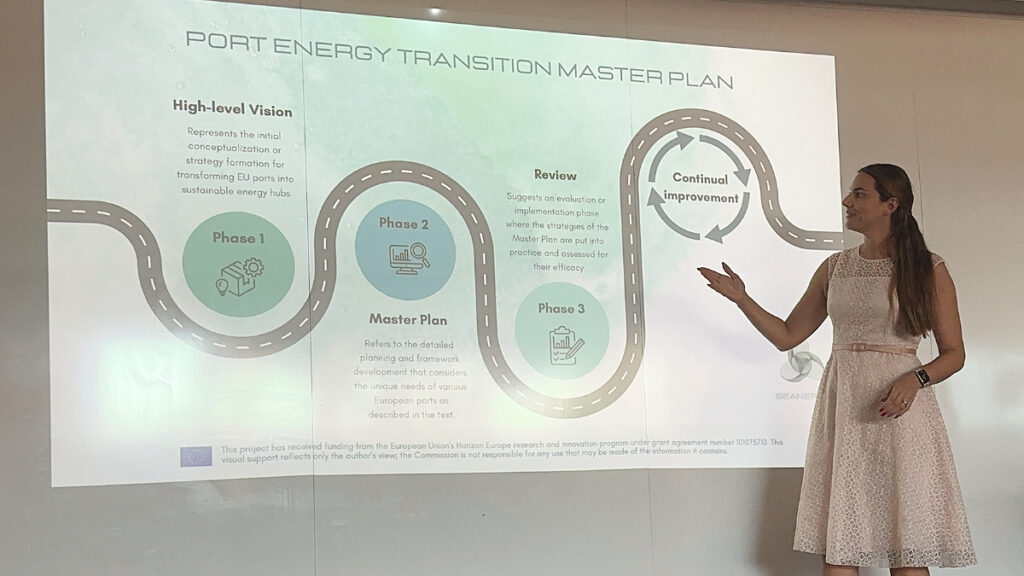The SEANERGY Project, represented by project partner ECO Imagination, made a significant impact at the ECO-Evolution event on August 14th by unveiling its ambitious SEANERGY Master Plan. This plan represents a bold vision for transforming European ports into zero-emission clean energy hubs, integrating renewable electricity, hydrogen, and other low-carbon fuels, and serving as testbeds for waste reuse and circular economy practices.
ECO-Evolution brought together leaders, innovators, and environmental advocates to explore the latest advancements in sustainable technologies and practices. As part of this event, the SEANERGY Project presented the SEANERGY Master Plan, a comprehensive strategy aimed at reshaping the role of ports in achieving a sustainable, low-carbon future.
Transforming Ports into Clean Energy Hubs
During the presentation, the SEANERGY Project outlined its strategy for integrating renewable energy sources—such as wave, tidal, and offshore wind—into port operations, alongside innovative solutions like hydrogen production and storage and other low-carbon fuels.
The SEANERGY Master Plan envisions ports as dynamic centers of clean energy production and distribution, supporting wider energy systems and contributing to the decarbonization of port activities and surrounding communities. Additionally, it focuses on turning ports into testbeds for waste reuse and circular economy initiatives, ensuring that resources are used efficiently and environmental impact is minimized.

The Master Plan sets forth a vision where ports play a crucial role in the global energy transition. By integrating multiple forms of renewable energy, ports can become self-sufficient hubs that not only power their own operations but also supply clean energy to local and regional grids. This approach will reduce dependence on fossil fuels, lower carbon emissions, and enhance the resilience of energy systems.
The presentation at ECO-Evolution highlighted the collaborative nature of the SEANERGY Project, involving a consortium of research institutions, industry partners, and stakeholders from across Europe. This partnership is key to advancing the project’s goals of developing and deploying innovative solutions that promote the sustainable use of marine and port resources.